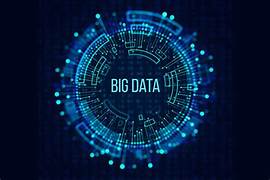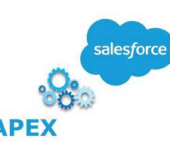Data Visualization: Turning Complex Data into Clear Insights
Data visualization is the practice of converting information into visual formats, such as maps or graphs, to make data more accessible and understandable. The primary purpose of data visualization is to highlight patterns, trends, and outliers within large data sets, allowing users to quickly glean insights. The term is often used interchangeably with information graphics, information visualization, and statistical graphics.
The Role of Data Visualization in Data Science
Data visualization is a crucial step in the data science process. After data is collected, processed, and modeled, it must be visualized to draw meaningful conclusions. It’s also a key component of data presentation architecture, a discipline focused on efficiently identifying, manipulating, formatting, and delivering data.
Importance Across Professions
Data visualization is essential across various fields. Teachers use it to display student performance, computer scientists to explore AI advancements, and executives to communicate information to stakeholders. In big data projects, visualization tools are vital for quickly summarizing large datasets, helping businesses make informed decisions.
In advanced analytics, visualization is equally important. Data scientists use it to monitor and ensure the accuracy of predictive models and machine learning algorithms. Visual representations of complex algorithms are often easier to interpret than numerical outputs.
Historical Context of Data Visualization
Data visualization has evolved significantly over the centuries, long before the advent of modern technology. Today, its importance is more pronounced, as it enables quick and effective communication of information in a universally understandable manner.
Why Data Visualization Matters
Data visualization provides a straightforward way to communicate information, regardless of the viewer’s expertise. This universality makes it easier for employees to make decisions based on visual insights.
Visualization offers numerous benefits for businesses, including:
- Identifying customer behavior factors.
- Spotting products or services needing improvement.
- Making data more memorable for stakeholders.
- Determining optimal product placement.
- Predicting sales or revenue volumes.
Advantages of Data Visualization
Key benefits include:
- Actionable insights: Visuals in business intelligence dashboards enable quick absorption of information, leading to faster decision-making.
- Exploring complex relationships: Advanced visualization tools can reveal intricate connections among data points, facilitating quicker, data-driven decisions.
- Compelling storytelling: Visually appealing data dashboards maintain audience interest and enhance understanding.
- Accessibility: Visualization tools make data more understandable, even for non-technical users.
- Interactivity: Interactive dashboards allow users to explore data further, which is particularly useful for those less familiar with the subject matter.
Challenges and Disadvantages
Despite its advantages, data visualization has some challenges:
- Complexity: Overly complicated visuals can be cluttered and hard to interpret, requiring users to be trained on the tools to avoid missteps.
- Potential for misinterpretation: Incorrect conclusions can be drawn from complex visualizations.
- Data privacy and security: Visualization platforms must be secure to protect data from cyberattacks and comply with privacy regulations.
- Bias: Visualizations should be carefully scrutinized to avoid intentional or unintentional bias, which could undermine the credibility of the analysis.
Data Visualization in the Era of Big Data
With the rise of big data, visualization has become more critical. Companies leverage machine learning to analyze vast amounts of data, and visualization tools help present this data in a comprehensible way.
Big data visualization often employs advanced techniques, such as heat maps and fever charts, beyond the standard pie charts and graphs.
However, challenges remain, including:
- Human intervention: Specialists may be required to choose the best data sets and visualization styles.
- IT resources: Visualizing big data demands powerful hardware and possibly cloud migration, requiring significant IT support.
- Data integrity and security: The accuracy of visualizations depends on the quality of the data, necessitating strict data governance.
Examples of Data Visualization Techniques
Early computer-based data visualizations often relied on Microsoft Excel to create tables, bar charts, or pie charts. Today, more advanced techniques include:
- Line charts: Display how variables change over time.
- Area charts: Similar to line charts but show multiple values in a time series.
- Treemaps: Display hierarchical data in a nested format.
- Population pyramids: Use stacked bar graphs to illustrate demographic distributions.
- Scatter plots: Show relationships between two variables.
Common Use Cases for Data Visualization
Data visualization is widely used across various industries, including:
- Sales and Marketing: Visualizing web traffic and revenue trends to optimize marketing strategies.
- Politics: Mapping election results geographically.
- Healthcare: Using choropleth maps to visualize health data across regions.
- Science: Enabling deeper insights through scientific visualization (SciVi).
- Finance: Analyzing investment performance using candlestick charts.
- Logistics: Optimizing shipping routes with data-driven supply chain visualizations.
- Data Science: Building visualizations for pattern recognition and trend analysis.
The Science Behind Data Visualization
The effectiveness of data visualization is rooted in how humans process information. Daniel Kahneman and Amos Tversky’s research identified two methods of information processing:
- Fast, automatic, and unconscious: Used for everyday tasks like reading signs or simple math problems.
- Slow, logical, and deliberate: Required for more complex tasks like solving difficult math problems or understanding complex social cues.
Visualization Tools and Vendors
Data visualization tools are widely used for business intelligence reporting. These tools generate interactive dashboards that track performance across key metrics. Users can manipulate these visualizations to explore data in greater depth, and indicators alert them to data updates or important events.
Businesses might use visualization of data software to monitor marketing campaigns or track KPIs. As tools evolve, they increasingly serve as front ends for sophisticated big data environments, assisting data engineers and scientists in exploratory analysis.
Popular data visualization tools include Domo, Klipfolio, Looker, Microsoft Power BI, Qlik Sense, Tableau, and Zoho Analytics. While Microsoft Excel remains widely used, newer tools offer more advanced capabilities.
Data visualization is a vital subset of the broader field of data analytics, offering powerful tools for understanding and leveraging business data across all sectors.
🔔🔔 Follow us on LinkedIn 🔔🔔













